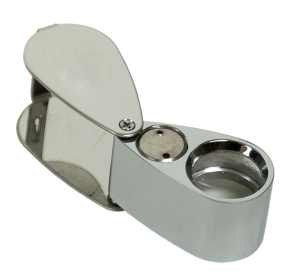

MedFriendly®


Loupe
A loupe is a small magnifying lens, usually one that
magnifies by 2 to 10 times. Loupes are different from
magnifying glasses because they do not have a handle
attached. Rather, the focusing lens is contained within
an attached cone or cylinder that allows some light to
pass through. Alternatively, sometimes the lens is
folded into a covering that protects it when it is not
being used. In the field of medicine, a loupe is used to
see medical details more closely. For example, loupes
are commonly used by doctors for skin examinations
and by dentists to improve the accuracy of dental
examinations and procedures.
FEATURED BOOK: Antique Medical Instruments
Dentists use loupes to determine the length of small cracks, identify areas of tooth decay,
determine where to drill in surgery, and stitching the gums. Dental loupes usually magnify
2.5 times.
Loupes are also used in surgery when operating on areas where extra care is needed.
Examples include heart surgery, small blood vessel surgery, bone surgery, plastic
surgery, and tendon repair surgery. Tendons are groups of fibers that attach muscles to a
bone. Dentists and surgeons have loupes inserted in special eyeglasses or attached to
the outside of the eyeglasses.
"Where Medical Information is Easy to Understand"™
These eyeglasses are individualized to the doctor, taking into
account their unique visual characteristics (e.g., distance between
the pupils, visual acuity). To help see better, a light (known as a
loupe light) is attached to the eyeglasses.
This is often needed because without it, the dentist’s head would
block the overhead light. For clear white light, LED light sources or
other light sources can be obtained from a cord or fiber optic cable
that runs from the loupe to a standard plug-in electrical outlet or to a
nearby light source. A rechargeable battery pack attached to a belt
clip can also be used.

Loupes are also used in biology when magnifying glasses are not practical for the situation yet there is a
need to see small structural features (e.g., tiny hairs) that can help in identification and/or classification. A
loupe is also known as a hand lens. Loupe comes from the French word “loupe” meaning “watchmakers
magnifier.”














